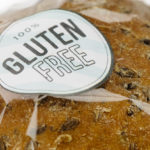Too Many Nuts
How many nuts are too many nuts?
If you’re eating any nuts more often than as the occasional garnish, it may be too much.
Because all nuts and seeds are high in inflammatory Omega 6s, and low in Omega 3s, they should be considered more of a garnish, rather than a go-to source of daily fat intake. Nuts also have a fair amount of phytic acid inherent to their structure which are potent anti nutrients. Similar to the anti nutrients found in grains or legumes, they bind to a wide range of vitamins and minerals, preventing us from properly absorbing them. In addition, they contribute to leaky gut by creating microscopic tearing in the intestinal walls.
So why are some nuts ok, but not some grains or some legumes?
This brings us right back to the point in question- because we’re only meant to be eating a small portion, as a garnish, on occasion, whereas with pasta, bread or bagels, the amount eaten in the typical American diet is far beyond a garnish.
A tablespoon of raw walnuts on a salad or a handful of raw almonds with an apple, some sliced turkey and spinach made into a wrap a couple times per week is the way to go, not eating a vat of salted nuts, roasted in peanut oil, that you purchased on sale at Costco each week.
Soaking nuts and seeds does indeed reduce the phytic acid content, but it’s still there.
Certain populations may need to be even more careful with nuts, such as those with autoimmune conditions. Some can tolerate nuts and seeds while others cannot. The best approach is to go nut-free for a month on top of the standard Paleo regime and then test to see if you react.
Go-to fats to eat regularly include fresh avocado, extra virgin olive oil, coconut oil as well as fats found naturally in our proteins, like wild salmon and black cod, both of which are rich sources of uber healthy Omega 3s.





